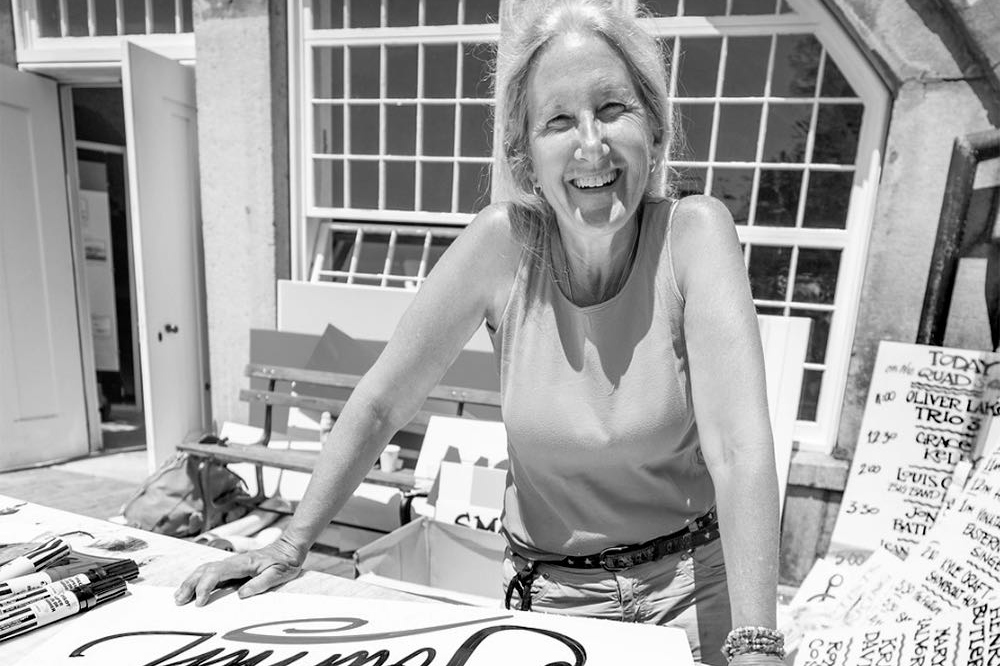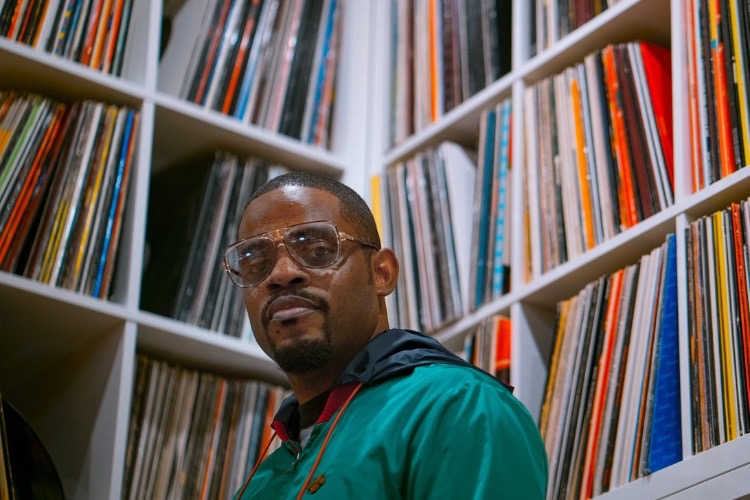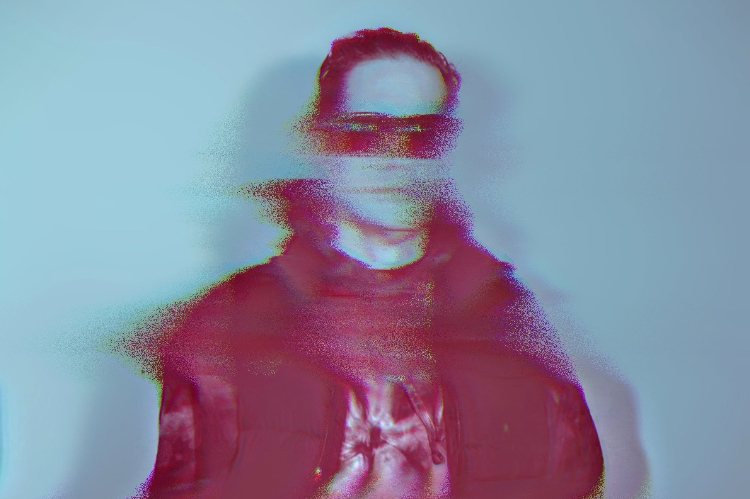Informed by Art: Signmaker Nan Parati on Newport, New Orleans, and Her Craft
|
Getting your Trinity Audio player ready...
|
“Stop.” “Exit.” “Wet Floor.” From a purely functional perspective, readers encounter signs countless times throughout their day. They have become so commonplace that many are understandable by mere symbols without text. But at what point does a sign become more than just notice or direction? We are similarly swimming in an ocean of sounds yet most would not identify but a few as “music.” Signmaker Nan Parati has mastered the space in which written information becomes art. Her signs, frequently associated with some of the most premier music festivals in the world- including the Newport Jazz Festival, the Newport Folk Festival, and New Orleans Jazz and Heritage Festival- are more than indicators of who is on a set performance stage. Her swirls, stars, and even her own copyrighted font, are often as reflective of an artist’s identity as their music itself. It’s no surprise her name came up in a conversation with Stuart Bogie on his thoughts of performing at Newport.
We continue our series on the history of the Newport Jazz Festival by stepping a little behind the scenes. Parati, who has crafted signs for George Wein’s most prized festivals for several decades, shares with us part of her story.
PostGenre: When and how did you start making signs?
Nan Parati: It is a funny story. In 1983, before Whole Foods Markets were everywhere, there was a place in New Orleans called the Whole Food Company. I was a kid and began working in Whole Food Company’s produce department. I was not a good fit there and ended up getting fired. The day my boss was going to fire me, I convinced him to move me to the cheese department instead. It ultimately didn’t work out there either. So, in about two weeks, I got fired from two different jobs. On my last day in the cheese department, I found out the store’s signwriter was leaving, and I knew that was the job I was supposed to do.
I convinced the manager to give me one last chance, this time as a sign writer. He gave me a shot, and it ended up working out. I did so well making signs that I ultimately became the Company’s head of advertising. I always thought it was funny that I went from being fired twice to being the head of advertising.
PG: How did the grocery signs move over to music festivals?
NP: Well, at that time, Jazzfest [The New Orleans Jazz and Heritage Festival] used painted banners made by a guy named Roy Lands. Old Jazzfest photographs will show you his work.
But Jazzfest didn’t have anyone writing signs for the stages or, really, anything else. The Jazzfest organizers saw my signs at Whole Foods Company and asked me to do the stage signs for the 1985 festival. I agreed and made all the stage signs with the band names. The next year, they called me back and asked if I could also do parking and no parking signs. I agreed, and the rest is history.
PG: How did your signs move beyond Jazzfest to other festivals?
NP: Roy Lands retired after I had worked for Jazzfest for a few years. With Roy leaving, Jazzfest needed someone else to do their banners, and I started learning how to paint them. My dad was a graphic designer, so I grew up making signs and learning from him. My experience working with my dad certainly helped with the banner painting, but I still needed to learn a lot to paint them. It was a challenge but also a lot of fun. For one of the banners, I painted the Jazzfest logo freehand. [Jazzfest producer] Quint Davis, who I hadn’t met previously, saw the banner and was surprised I could paint it so well.
PG: Jazzfest’s logo is not the easiest thing to paint.
NP: No, it’s not. And this was back in the 80s, way before people would print using cut-out vinyl machines. I guess Quint was impressed by my work. The next thing I knew, Festival Productions [which ran Jazzfest, the Newport Festivals, and several other festivals at the time] invited me to provide signs for the Jambalaya Jam and River blues, two festivals in Philadelphia. I made the signs, and it went well.
Not long after, Quint and Festival Productions produced an event called “America’s Reunion on the Mall.” It was part of Bill Clinton’s presidential inauguration. Quint asked me to do the signs for the event and I also designed all of the stage backdrops. It was my first serious design job, and I had a great time. It was a great way to start in the business. My career took off since then.
PG: And at what point did your signs make it to Newport?
NP: I believe I started making signs for the Newport Jazz Festival and Newport Folk Festival sometime in the 90s. Of course, that came through Festival Productions as well.

PG: Is Jazzfest your largest project each year?
NP: Definitely. Between stage signs, vendor signs, and everything else, I make many signs for Jazzfest. I probably make about 5,000 to 6,000 signs in total during any given year. Over half are for Jazzfest.
PG: How do you manage to make that many signs for Jazzfest?
NP: I don’t know. Somehow, I just do. I’ve always been a servant to duty, even back when I was young and making signs while sitting on the floor of my dad’s studio. My father raised me to be a responsible person in life. When I commit to something, I do it. It does help that I start to make signs with some significant lead time before Jazzfest. And when you’ve been making signs for Jazzfest for 38 years, you know what you are getting into and how long it takes to make each sign.
PG: Are there any specific events you have made signs for over the years that stand out to you?
NP: That’s a good question. I don’t know if anything I’ve done is necessarily more significant than anything else. I like everything I do and have a great life.
But, the work I did for two presidential inaugurations – Bill Clinton in 1992 and, again, in 1996 – was particularly memorable. It was very exciting to be a part of a presidential inauguration, let alone two of them. In addition to signs for the inaugurations, I also designed some sweatshirts and other swag they gave away or sold at the events. I also met the president. It’s always interesting to meet the most powerful person in the country.
PG: Has there been a sign you have made that was particularly complicated to create compared to others?
NP: No, I don’t think so. At least not when it comes to writing signs with markers. I also paint signs but I don’t enjoy painting nearly as much as I do with markers. I’m also much faster with markets than paint. So, when people ask me to paint signs, I am a little more hesitant to do so. Beyond that, it is hard to say I like one of my signs more than another.

PG: Have there been any sign requests you have found particularly surprising?
NP: I’m sure there are, but I can’t think of any at the moment.
PG: Some people have even used your signs for marriage proposals.
NP: Actually, that happens somewhat regularly. And, so far, using the sign that way seems to work very well. As far as I know, every time one of my signs was used in a proposal the person being asked said yes. So, it seems like a good strategy to use one of my signs during a proposal. [Laughing]. I also make a lot of signs for weddings, wedding announcements, and invitations. For those types of projects, I will usually create the sign, digitize it, and then send a digital copy to the person requesting it. They will then print it on invites or cards or whatever they plan to make.
PG: Because of some of these personal use orders, even after the pandemic canceled so many of your events in 2020, you remained busy making signs.
NP: Right. People outside the festivals seem to be interested in my signs as well. The radio station WWOZ in New Orleans did several fundraisers where people could order a sign from me.
And, for Newport, we did a very cool thing last year. We started taking the signs for the stages, asking artists to sign them and then auctioning them off to support the Newport Festivals Foundation [which runs the Newport Jazz and Folk Festivals]. It was very cool to have people like Mavis Staples autograph my signs. But it was even more awesome to be able to support the Festivals Foundation – the sign auctions brought in $30,000- and the incredible work they do not only to present the Newport Jazz and Folk Festivals but also in music education.
PG: What do you like most about making signs?
NP: [Laughing] People will think I’m a little crazy when I say this, but I enjoy interacting with the signs. They actually talk to me.
PG: It is not uncommon for an artist to think their work speaks to them, in some way, and your signs are certainly art.
NP: Right. The sign will tell me whether to use a swirl or a star on it. Or what particular colors to use. As you said, the signs are art and, uninterrupted, I talk to them, and they talk to me. We have a good time together. I’m always having fun making signs.

PG: Is there anything you have refused to put on a sign?
NP: I rarely turn down a sign request, but there have been some. I am nice when I reject a request for a sign, but I have guidelines I must follow in making my signs.
I require that the messages on all my signs be positive. I don’t make negative signs. Sometimes, especially for personal orders, I need to ask the person ordering the sign if they are being serious with their request. I want to ensure no one will use one of my signs to make fun of anyone or convey anything mean-spirited. In those cases, I always reach out to the person requesting the sign to get the story behind it. I don’t want to anger them, but I also want to ensure that each of my signs conveys a positive message.
My focus on positive messages is partly because of how closely people associate my signs with so different festivals, especially Jazzfest and the Newport Jazz and Folk Festivals. I don’t want negativity on my signs being tied to the festivals in some way. I also don’t write political signs for the same reason. I don’t want to align a festival with a particular politician or perspective on an issue.
I also will not make signs that copy someone else’s work. There is a signwriter in New Orleans named Dr. Bob, who is best known for signs that read “Be Nice or Leave.” When people ask me to make a sign that says “Be Nice or Leave”, I refuse to do it because that’s Dr. Bob’s sign. I respect his work and won’t copy it.
PG: Speaking of projecting your own voice on a sign, you have copyrighted two of your sign fonts. Did you find that people were emulating your work?
NP: When I filed for the copyrights, I didn’t feel like people were trying to copy my signs. But I was concerned they may someday. I’ve spent 38 years developing my fonts and have put a lot of work into them. I handwrite over 3,000 signs each year for Jazzfest. I don’t do nearly as many for Newport Jazz and Folk, but I still do many for those festivals, as well. It’s a relief that my handwriting will be recognized as my own. Just as I won’t copy Dr. Bob, others should not copy me. It is better for everyone that writers develop their own handwriting. Though, sometimes, it takes decades to master.

More information on Nan Parati can be found on her website. If you would like to order a sign from Parati, you can contact her at Nan @NanParati.com.




One thought on “Informed by Art: Signmaker Nan Parati on Newport, New Orleans, and Her Craft”